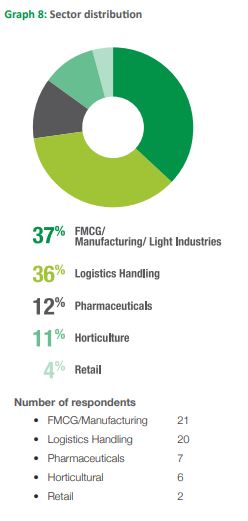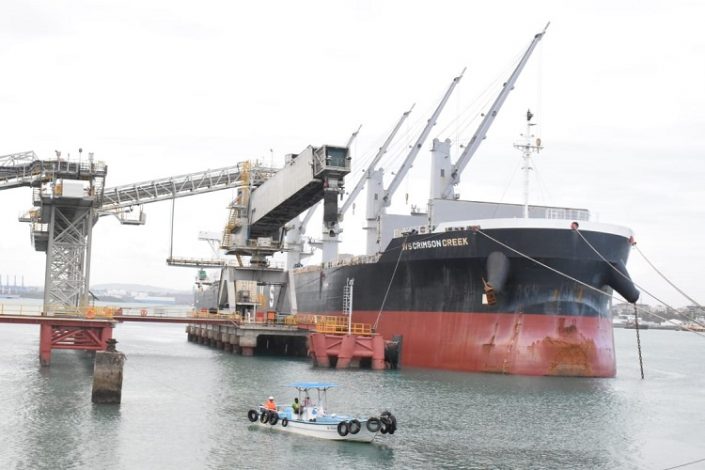Over the last few years, the demand for an easily accessible warehouse in Kenya has grown exponentially. This is being driven by the rise in demand for the storage of perishable foods, expansion of retail channels, and growing food safety concerns.
The growth of online selling platforms such as Jumia, Kilimall International, Masoko, Aladin, Pigiame, Africa Sokoni among other has created the need for warehouses that are easily accessible to serve clients who expect a predictable, reliable delivery.
Moreover, the new standard gauge railway which can handle more than 1200 feet counters per day has upsurged the warehousing needs.
Warehouse Statistics in Kenya

In the last five years, 31 percent of business have suffered setbacks due to warehousing shortage.
In Kenya, a company needs 32291 sq ft of storage to operate optimally to meet the demand, but most of the available warehouses are small and measure between 1000 sq feet to 3300 sq. feet.
This is in contrast with developed economies such as the United States whose warehouses average 184693 sq. feet. Unlike the global market, most of the warehouses in Kenya are owned and rented with 41 percent of the respondents in the survey being the owners while 46 percent are renting the space.
On the other hand, the Kenyan Government has an ambitious plan to grow the manufacturing sector GDP from 9.2 percent in 2018 to 20 percent in 2022.
Despite the government’s ambitious plan to enhance the manufacturing sector the statistics on the construction of the warehouses remain gloomy.
According to the Kenya Property Development Association in 2017, 2303 permits for planning were approved and only 199 were for warehouses.
More recently, in May 2018, only 17 permits were approved for warehousing compared to 183 (domestic class) and 26 (public class).
What ails the development and construction of Warehouses in Kenya?
Knight Frank’s 2018 Market Update report, the occupancy rate for new retail centers in East Africa is running at between 60 and 75 percent while logistics is reporting pre-lease rates of as high as 75 percent.
“Modern well-configured logistics space is currently scarce in spite of growing demand for high specification facilities, and this has led to some occupiers developing their own space. Rising demand in this sector has prompted the emergence of several master-planned industrial parks, particularly on the outskirts of Nairobi where developers are taking advantage of new infrastructure developments, but construction is yet to commence on a large scale.”
Cytonn Real Estate also collaborates this in their H1’2018 Markets Review where value in the sector remain to be “Grade A offices which are in short supply accounting for just 24.0 percent of the office space supply in the market and have attractive returns with average rental yields of 9.8 percent, compared to a market average of 9.3 percent.”
In September, Africa Logistics Properties (ALP) announced a 75 percent lease for its 50,000 sqm of logistics and distribution complex. Construction of ALP’s second project, ALP West, is currently underway. The 100,000-sqm facility will sit on 49 acres and is located on the A104 Nairobi-Nakuru highway. Phase 1 is set to be completed by mid-2019.
Cost of development
Unlike the development of any other rental property, the cost of constructing a warehouse in Kenya is prohibitive. According to Tilisi logistics, an investor will need approximately $43,000 for permits, and utility connections.
If you want to put up a grade-A warehouse or cold storage, it’s even more expensive. The cost of constructing a warehouse is double what constructors spend in our neighboring countries.
High Land Cost
Land prices in Kenya are high and an acre in prime location cost around 35 million. The demand for land has increased considerably and that has pushed the prices up.
High Population Growth
According to statistics by Kenya National Bureau of Statistics, Kenya has an estimated population of 47m and that figure is expected to double by 2030. The growing population creates a demand for houses.
The ever-rising demand for housing coupled with the ability to get forecasted cash flows one can expect from a project makes developers opt to build houses than warehouses.
Most warehouses are leased and in case of any contingencies, the pricing set can’t be changed unlike in housing where you are able to set the price depending on the current economic factors.
Effects of Slow Development of Warehouse
Slow Economic Growth
Warehousing plays a major role in the growth of the economy, and the government needs to follow through with the plan to achieve its targets. Lack of warehousing space will mean a delay in meeting customer needs, lost sales and lost job opportunities.
High Rental Prices
The current average rental price per square ft for a warehouse is KSh 44.6 which is among the highest prices in the world. The rental prices have been going up at an alarming rate due to the increased in Demand.
According to Tilisi, the price per sq ft increased by 2.8 percent between 2013 and 2015 and by 11.5 between 2015 to 2017 as the shortage of warehousing continues to bite.
The high prices increase the cost of doing business in the country, causing investors to shy away and thus hinder economic growth. Investment in warehousing will lower the cost of doing business and that will Kenya an attractive business destination.
The high cost of goods
High logistics cost will lead to the high cost of consumer goods. Logistics cost lead to the increased cost of consumer goods and according to Mckinsey and company, the cost of logistics account for 40 percent of the price of goods. Warehouse shortage translates to a high cost of living.
Trademark East Africa says firms that can rely on efficient logistics, modern supply chains and just-in-time delivery systems are more efficient and cash generative and, therefore, more competitive “In order for East Africa’s exports to compete in the global marketplace, businesses operating in the region need to have reliable flows of inventories such as raw materials or finished goods, without which businesses need to carry higher levels of inventory to deal with uncertainty.”
Which Way Out
Way Up
Most of the warehouse located in the industrial area of the Capital City Nairobi are traditional. Most of the warehouses are single-story building limiting the size and operations. With the expected growth in E-commerce, pharmaceutical, and agriculture, we need to build warehouses that have multiple storeys.
With consumers expecting short delivery spans, vertical warehousing will help meet the needs. A multi-story future will see Kenya cut the demand for warehousing by half and that will enhance the economy of the country.
Additionally, most of the warehouses in Kenya are built to a height of 5 metres making it hard to stack more pallets. Increasing the height of warehouses will increase the storage space and reduce the cost of renting bigger spaces.
Reduced Cost of Warehouse Construction Permits
The high cost of permits is inhibitive and that makes the investor shy away and opt for commercial properties with a higher and faster return.
Infrastructure development
The Kenyan government has invested heavily in infrastructure and that is a major boost in solving warehousing shortage. With good road networks, and effective standard gauge railway warehouses don’t have to locate in the urban areas.
The growth in warehousing and logistics continue to emerge as a critical subject in Kenya’s commercial real estate underpinned by e-commerce enabled shipping, new technologies and the increasing need for more sophisticated supply-chain networks.
Cytonn Real Estate anticipates further growth given the intensified focus on manufacturing as one of the 4 Pillars of focus by the government for the next 4-years and the increased investment in infrastructure that is likely to improve the business in trade and logistics and also open up new fronts for warehouse development.
The Kenyan government has invested heavily in infrastructure and that is a major boost in solving warehousing shortage. With good road networks, and effective standard gauge railway warehouses don’t have to locate in the urban areas.
By Kabi Wangethi, a Freelance Writer. Follow her on Linkedin




